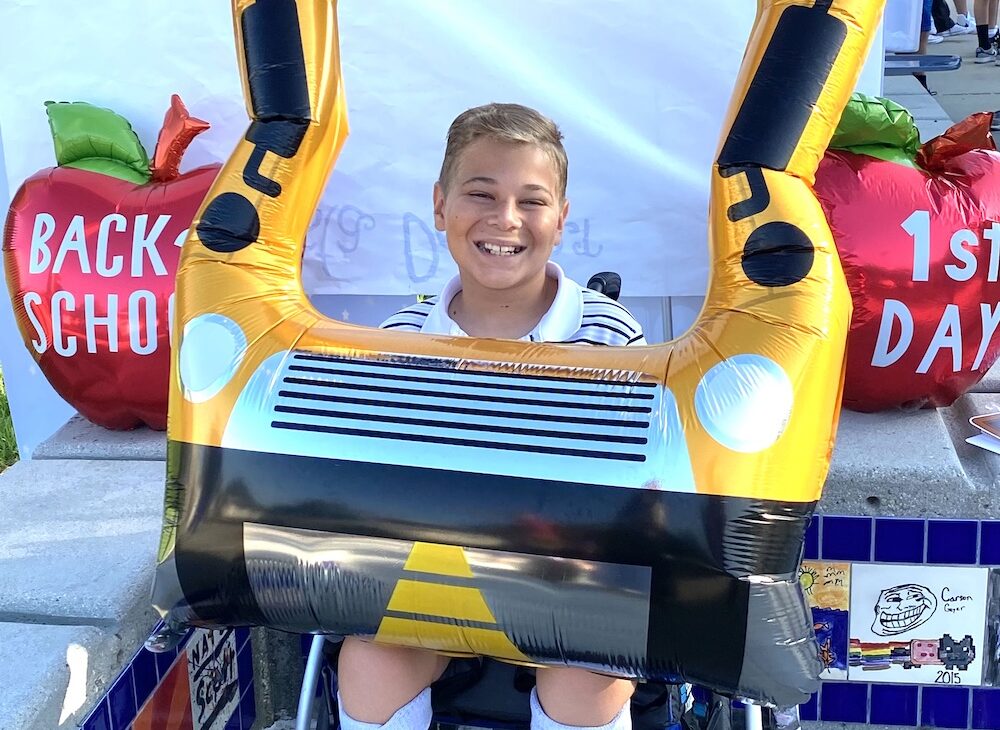Back-To-School Checklist

Back to school is a busy time for any household. For families of children with rare diseases, back-to-school may come with even more first-day jitters, preparations, and to-dos. Here are some practical tips for getting your child set up for a successful school year.
1. Tour the school
Take time to show your child around so that they can become familiar with their surroundings. Whether it’s a new school or just a new classroom, show them where they will physically be each day. This will help ease their anxiety about finding their classes and will allow them to picture themselves on campus. Ask the school’s permission if you may do a tour at off-school hours so that you can move through the space at your leisure, spending the time you need to allow your child to ask questions and to help them feel comfortable. If you’re allowed to do this with them, it will also be helpful for you to see how things are set so that you can help the school facilitate logistics and accommodations since you know your child best.
2. Create A Schedule
Once you have the school day schedule, create a daily schedule for your child that will help them understand how the day will flow. Use pictures, graphics, words, or whatever will help your child best understand the flow of the day. Include what time they will wake up, what they’ll do to get ready for the school day to start, the daily class schedule, and the plan for after school. Walk your child through this schedule to familiarize them with the new system and plan for school days.
3. Ask if you can meet the staff outside of class
Ask permission for a special meeting with any staff that will be working with your child regularly. Whether it’s their teacher or an independence facilitator, allowing your child to meet them outside of regular class time will help your child get to know them and vice versa. A little one-on-one time can help build their relationship.
4. Provide an “All About Me” document
Put together a document that you can provide any staff that works with your child. Include information about their diagnosis and how it affects their learning and their abilities. Also include information that helps them get to know your child’s personality, such as their likes, dislikes, interests, strengths, and things they are working on. You can also include any tips or insights on working with your child. Arm them with everything you think may best help them be successful working with your child.
5. Call an IEP or 504 meeting
If your child is on an IEP or 504 plan and you have new goals, questions, concerns, or information that needs to be addressed at the start of the year versus waiting until your next scheduled IEP or 504 meeting, call a meeting. You can use this meeting to work with your child’s team to get everything in place for the new school year.
6. Write a letter to the parents of classmates
If you feel that it might be helpful to answer questions about your child’s disease or disability upfront, consider writing a letter to the parents of your child’s classmates. This can help build understanding and awareness. You can also ask for their assistance with things like inclusion, or whatever may help your child. In some cases, it might be helpful to provide helpful language and ways that they can talk to their children about your child. Or, it might be beneficial for your child to write a letter to their classmates (with your help) explaining anything you think might be helpful for classmates to know. Sometimes this can be helpful to answer questions right off the bat instead of your child having to answer questions on the spot in person. Every circumstance is different, so you’ll know best if this would be helpful for your situation.
7. Create a communication log
Want to be kept in the loop on your child while they are at school? Set up a communication log or system with your child’s teacher and/or aide that can go home every day or every week. This can be the place where you exchange information, raise concerns, address issues, or share news. Establish a system at the start of the year so that it can work for you all year long.
8. Ask if your school has a mentor system and pair them up
Find out if your school has some sort of mentoring or buddy system and ask that your child be paired up with an older student that can show them around, look out for them, be a friend, etc.
9. Volunteer in the classroom or at special events
Volunteering is a great way to be hands-on and allow you to gain insight into how your child is doing in the school environment. It can also open up a dialogue with your child’s teacher. While every school’s volunteering policies are different if this is something that your school allows and your schedule permits, it can be a great way to stay in tune with your school and the happenings in your child’s classroom.
10. Allow time to adjust
The start of each new school year brings a lot of new, new, and more new. Grant yourself, your child, and the school staff some grace as you all adjust to all the newness. Think of the first month of school as a trial period where you adapt, modify, tweak, learn, and refine. Allow space and time for this, and know it will get easier and more efficient as things become more familiar and more understood. There’s a learning curve for all involved. Allow the needed time to find your groove!
Alright, mamas, those are my ten quick tips for getting things in place for a new school year. Good luck and happy back to school!

For more tips on how to advocate for your child’s education, click here to check out the post “Advocating for Your Rare Child’s Education”







